Elderberries: The New Hero! From Superfood to Supertextiles!
From natural dyeing to biomaterials innovation: Exploring elderberry waste with Sarah Clark, founder of the Guildford Racks Project
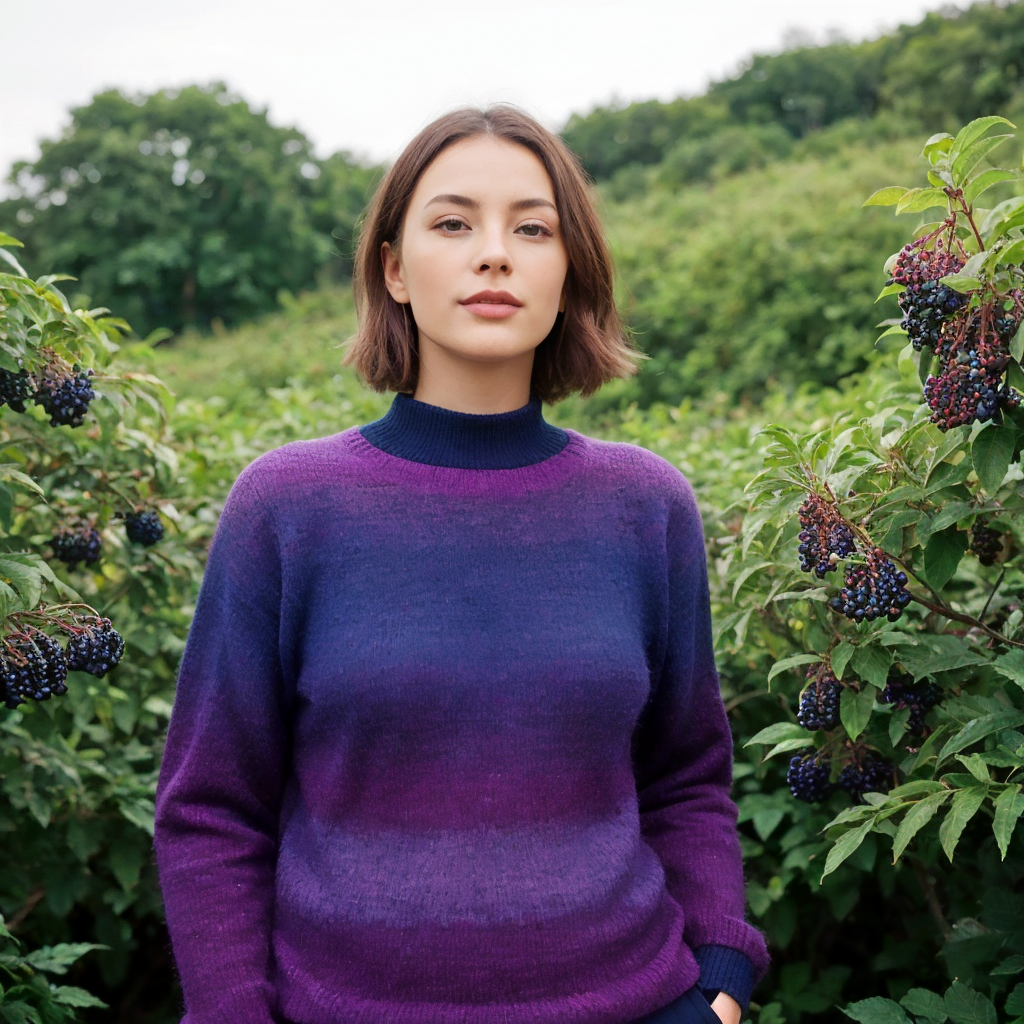
Sarah Clark, the founder of the Guildford Racks Project, has a strong commitment to engaging with her local community in Southeast England and to preserving the natural environment of her region. She is particularly passionate about researching innovative ways to utilize elderberry waste for textile solutions that are environmentally friendly. By focusing on repurposing materials and minimizing the extraction of natural resources, Sarah aims to continue contributing to sustainable fashion practices and lessen the environmental impact historically associated with the fashion industry. “There has been a network of artists, climate change activists, and sustainability advocates in Guildford for many years, that are happy to skill-share and support the Guildford Racks Project,
"we have a culture of people from different skill networks that have helped this movement get where it is today.”
because they have understood the importance of why the fashion industry needed to change the way it operated, and today we have a culture of people from different skill networks that have helped this movement get where it is today.”
The Beginning of Guildford Racks Project
16 years ago, Sarah started the Guildford Racks Project, which began with a manifesto to Guildford and Villages, proposing a sustainable fashion movement within their bioregion. “The first manifesto I ever wrote was typed out late at night onto A4 paper. I needed help from people from multiple sectors to get it up and running, and I asked shops and cafes in Guildford if I could stick it onto their community boards.” Sarah shows me on her laptop the original manifesto and the original emails she received the next day from locals who wanted to help her. “It was amazing, I had dozens of emails offering to volunteer, I never realised Guildford had so many people interested in sustainability.”
As we fast forward to 2040, I asked Sarah if she redrafted her Manifesto and if she would share it with us.
"Our project has evolved over the years, transitioning from researching natural and sustainable dyeing solutions to developing biomaterials." "As our projects became more serious, we sought assistance from local authorities. Our latest manifesto aims to clarify the Guildford Racks Project's objectives, as we play a significant role in Guildford's community, and we call on skills from professionals in multiple sectors.”
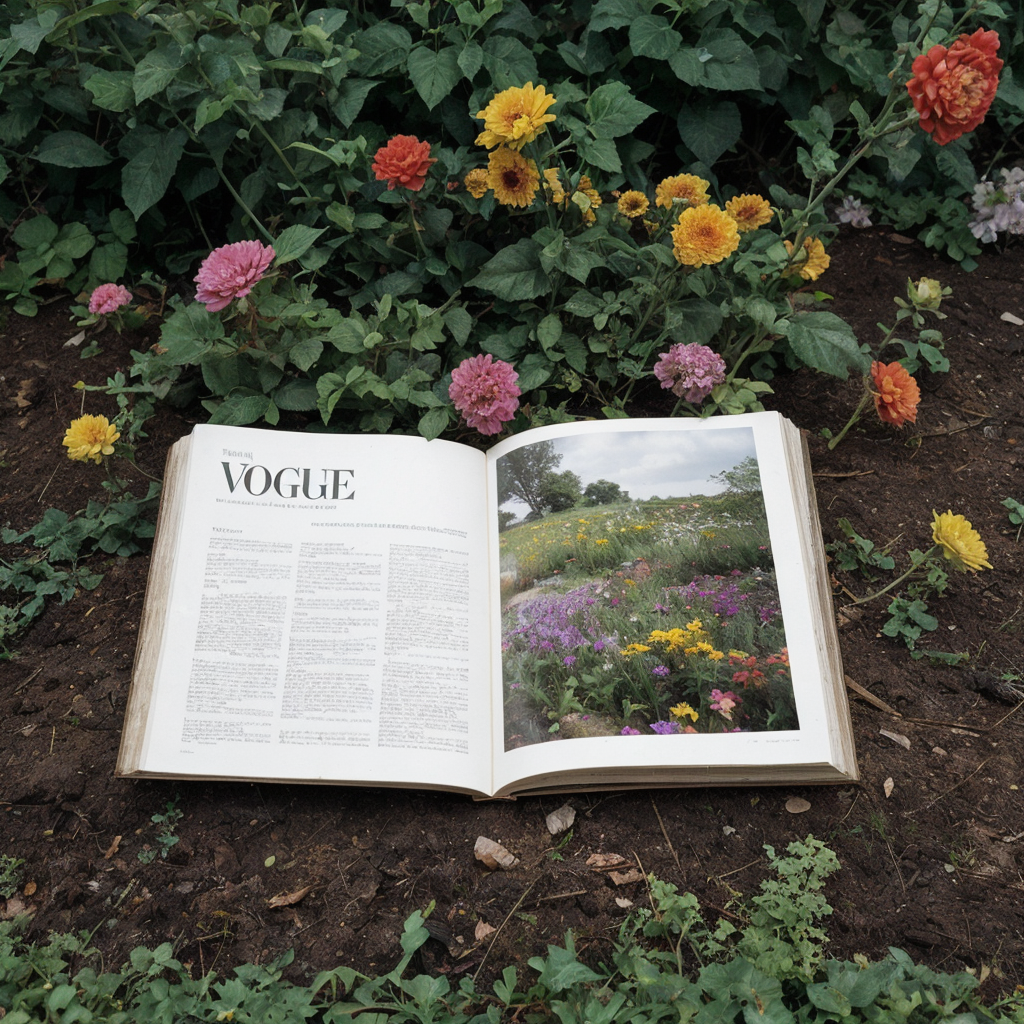
Advertisement - Grow your own Vogue garden, by planting the magazine into a flower bed. Starting with this first edition of mixed wildflowers that will attract pollinators. Cost £19.99
Advertisement - Grow your own Vogue garden, by planting the magazine into a flower bed. Starting with this first edition of mixed wildflowers that will attract pollinators. Cost £19.99
A Manifesto for a Sustainable Fashion Movement in Guildford
Guildford Racks Project prioritizes the planet over profit, embodying a movement that integrates science, technology, and tradition, all managed locally to foster sustainable growth in our community for future generations. Elderblue Concepts are a revival of Guildford Blue cloths, that are locally made, sustainable textiles, by transforming elderberry waste into the development of bio-based fibres and natural dyes. We are an independent organisation who are passionate about the history of Guildford and Villages, that has used our history to reintroduce a textiles sector to our bioregion, that promotes circularity and traceability through our supply chain, improves the quality of the countryside, boosts our local economy whilst empowering communities through job creation that is purposeful for the future of our local area.
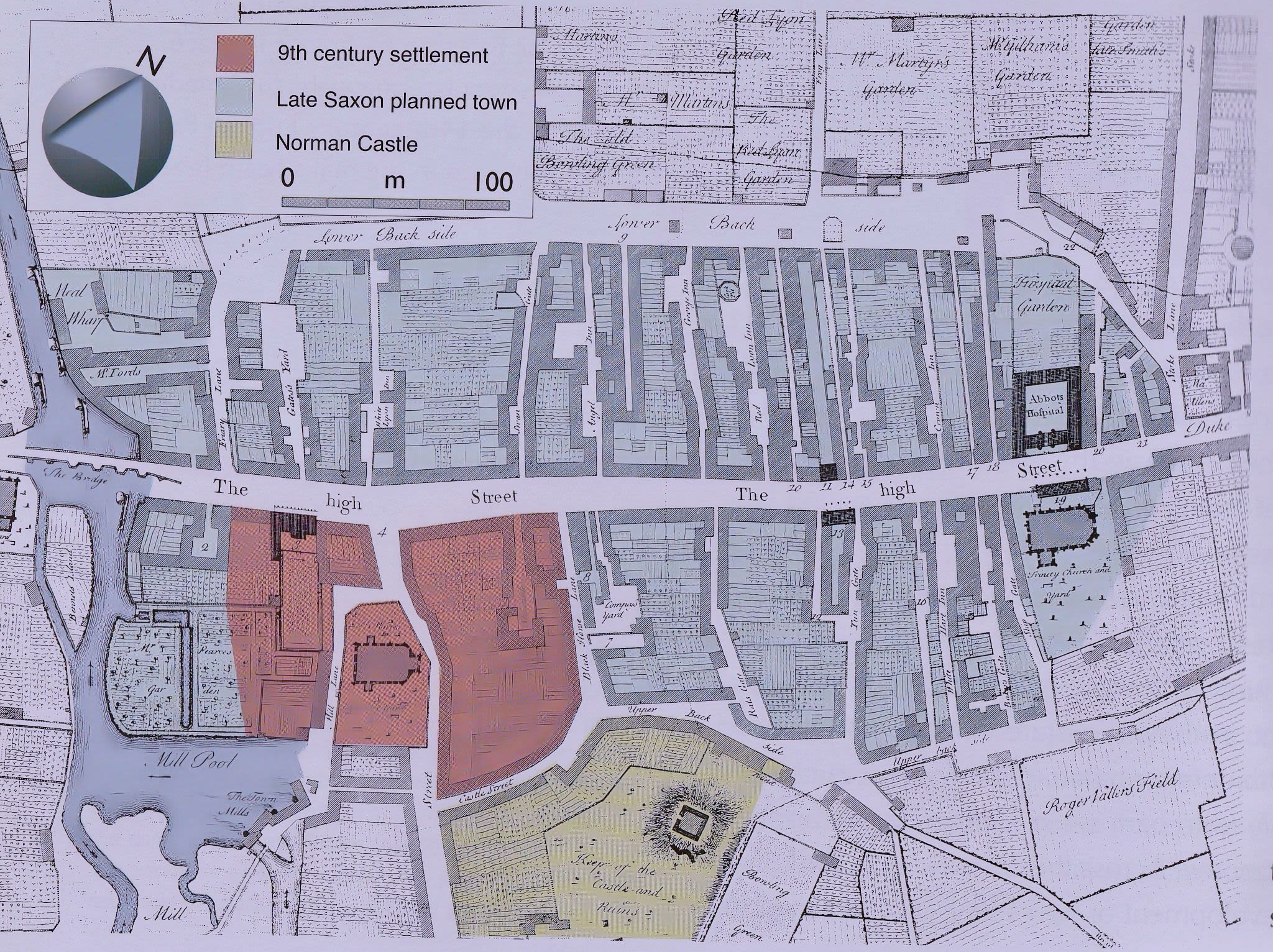
Our Core Values and Commitments
Planet First
- We consider the impact of our actions on the planet before profit.
- Net Zero goals for 2050 – We currently power our headquarters from Tollhouse Hydro Project and the University of Surrey Solar Facility. (7)
- Guildford Racks Project follows the UN Sustainable Development Goals.
- Finding new ways to reduce carbon output, through renewable energy initiatives.
- We work with local farms and charities to help conserve our natural environment.
Synergy
- Innovation: Partnering with leading universities & Surrey County Council, to develop sustainable biomaterials, and natural dyes made from food waste.
- We are researching new possibilities for using industrial food waste in further textile developments, with the assistance of Surrey County Council and with Bio Inspired Textiles.
- We are partnering with our local community to reduce domestic waste by introducing food waste collections for natural dyes.
Stewardship
- Water is life, so let's protect it. We secured funding for a professional filtration system to cleanse our wastewater before it is forwarded to the Surrey Environmental Partnership, where it will be converted into biofertilizer for agricultural use.
- Local conservation projects in collaboration with Surrey Wildlife Trust, WWF UK, and Manor Farm.
- Improve soil health through carbon sequestration and introducing hedgerows with livestock, with the guidance of Manor Farm.
Local Economy
- Education: We have developed with universities, and Surrey County Council, workshops for schools and colleges as an introduction to sustainable development, sustainable fashion, and regenerative farming.
- Job opportunities and government funded apprenticeships in sustainable textile engineering and biomaterials development.
- Producing natural dyes and bio textiles within our bioregion, generates work and new opportunities.
What are Elderblue Concepts?
Since 2024, food waste in the UK has been reducing slowly, due to sophisticated technological interventions during production, and with ordering systems (1) for manufacturers and retailers to select foods for accurate selection and restocking. However, due to the extraction of valuable components for juices, foods, and medicines, waste is still generated. Fortunately, we were able to identify in our bioregion, an elder tree orchard called Bush Barn Farm, which produces its own cordials and supplies organic elderberries to food and beverage companies. From their juice processing supplier, they have a percentage of waste called ‘cake,’ which consists of the skins and seeds left over from pressing the elderberries. Due to the strong dye quality of elderberries, and the variety of blue and purple tones they offer, we have put this waste to good use and developed a collection of Elderblue Concept products we feel very proud of.
Elderberry Cake. (2024, March). Retrieved from Bush Barn Farm
Elderberry Cake. (2024, March). Retrieved from Bush Barn Farm
Elderblue Dye. (March 2024). Retrieved from Bush Barn Farm
Elderblue Dye. (March 2024). Retrieved from Bush Barn Farm
Elderwool
For many years we have worked with regenerative farms, like Fernhill Farm to learn everything we need about handling sustainable wool, in terms of how to select sustainable farmers that have a regenerative approach to their farming, and to help us by identifying native sheep breeds that provide fibre that can be used for textiles. We source the best local wool for our Elderwool cloth from Butser Ancient Farm, Manor Farm, Hatchlands Estate, and Merrist Wood College, that possess rare sheep breeds. We dye our wool with Elderblue dyes, knit, and loom weaving all our fabrics from our Guildford Racks headquarters, utilising the historical craftmanship and talent that comes from Farnham Craft Town and our teamof textile designers, by keeping traditional textiles alive.
Elderbio
We have recently launched our first patented biomaterial, named ‘Elderbio’ developed from elderberry waste. Our team of researchers have been studying the construction of elderberries and has developed Elderbio yarns that have integrated colours from the elderberry offered in an array of blue and purple colours. Elderbio yarns are biodegradable, full of anthocyanins from the elderberry that are good for skin (4).
Why Choose Elderberries?
In the Middle Ages, when Guildford Blue was being produced, the local wool was dyed blue using a plant called Woad, which was farmed locally and over the years exhausted the soil (5). The soil grade is average to low in Guildford (6), making it difficult to sustain farming one crop growing in one place. So, we had to start thinking bigger, which led us to researching food waste in the UK and in our area. We have gathered a collection of agricultural, sustainability, and science experts from Manor Farm, Bio Inspired Textiles and The Natural Environmental Research Council, to help us research the biology of elderberry waste to develop Elderbio and Elderblue. Not only do our products lend themselves to textiles, but we have also branched out into areas of the wedding and funeral sectors using our wool and Elderbio materials, which are less impactful on the environment than traditional materials.
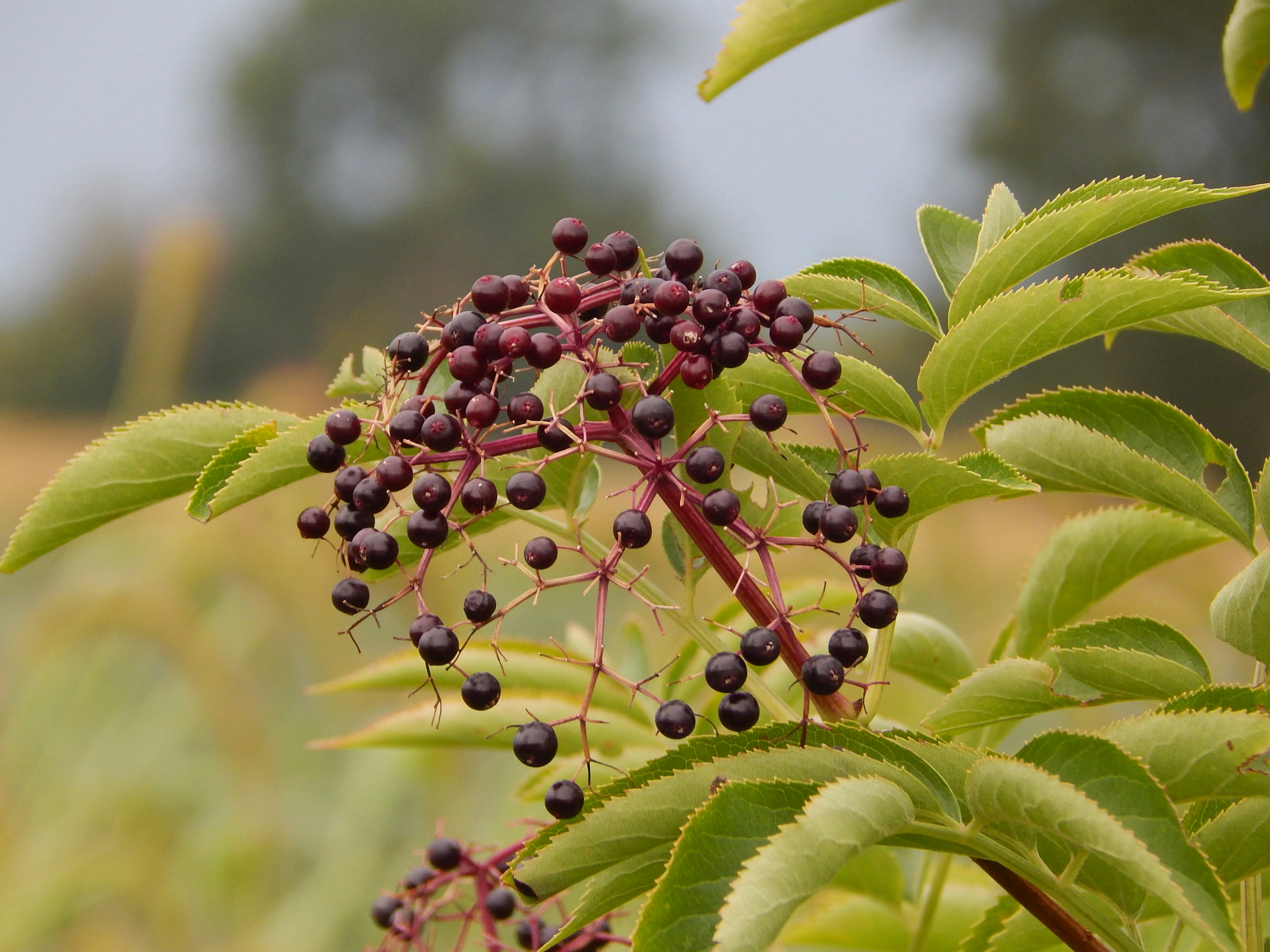
Source: Photo by Maddy Weiss on Unsplash
Source: Photo by Maddy Weiss on Unsplash
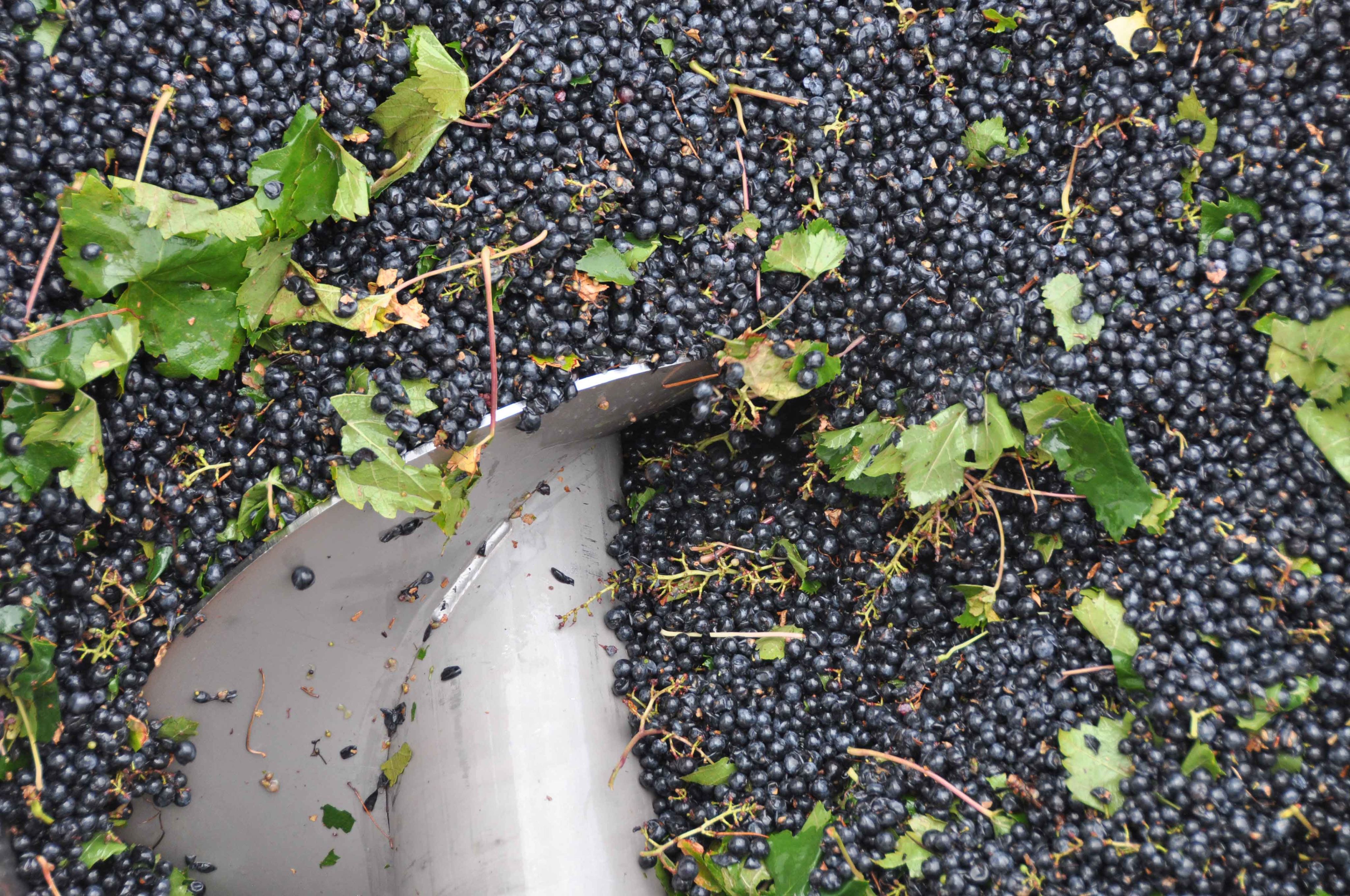
Source: 'Elderberries.' Accessed April, 2024 from website Wine Titles
Source: 'Elderberries.' Accessed April, 2024 from website Wine Titles
Looking to the Future
Beyond 2041, we're collaborating with the Surrey Environmental Partnership to roll out food waste caddies to every household in Guildford. In addition to general food waste caddies, these containers will specifically target items: beetroot, blueberries, onion skins, black tea, avocado stones, and skins. We will use these materials to develop new bio textiles. Households participating in our initiative will receive incentives, such as reductions on energy bills. Moreover, the waste from our bio dyes will be repurposed at Surrey Environmental Partnership's anaerobic digestion (AD) facility, (8) to be converted into biogas. This biogas will then power a portion of Guildford's homes, fostering a sustainable cycle of resource utilization.
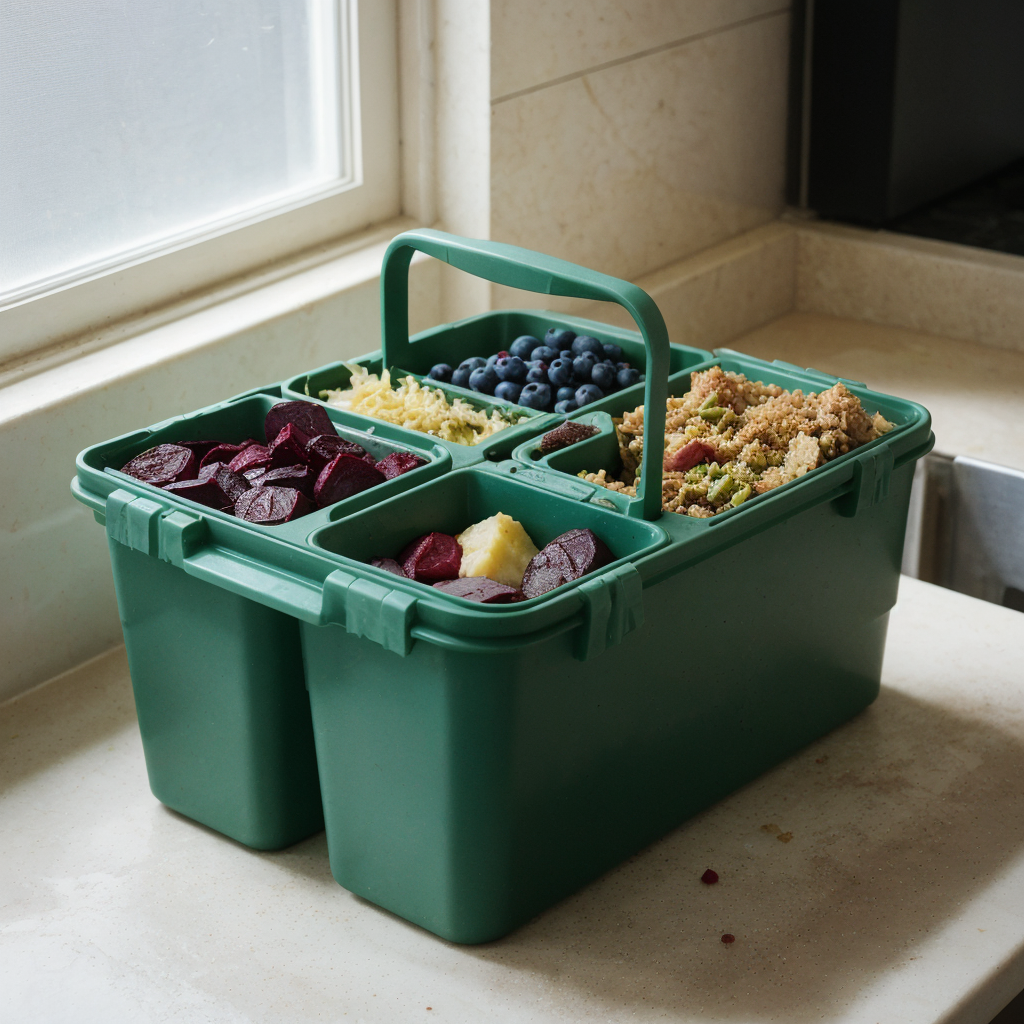
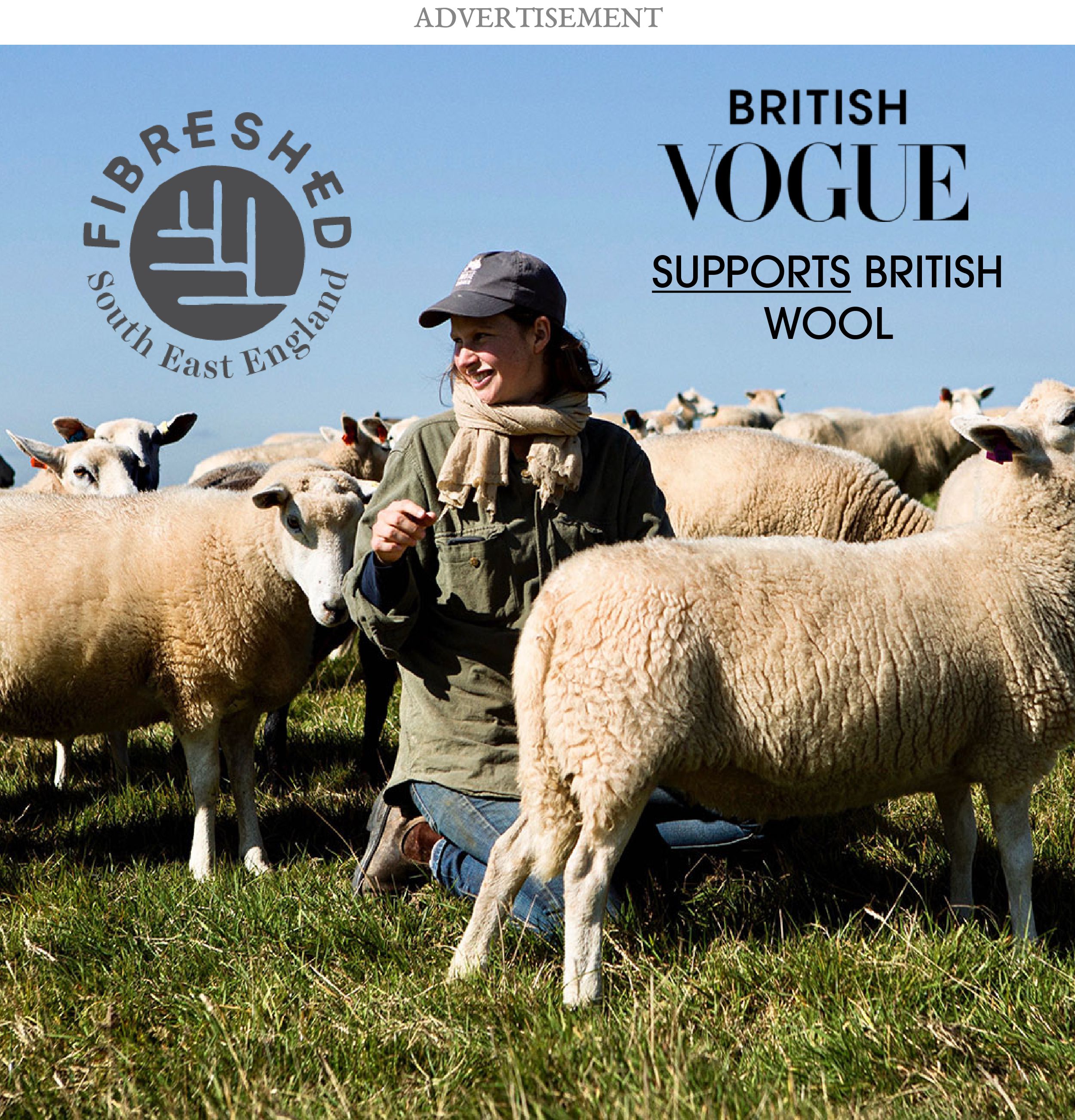
SUSTAINABILITY NEWS
- FASHION ON TRACK TO REACH NET POSITIVE WITH WATER AND CARBON BY 2041
- WHY GUCCI'S LAST FRAGRANCE WAS MADE FROM FLOWER WASTE
- TEN YEARS OF NO PLASTIC SPORTSWEAR, ELDERBIO BY GUILDFORD RACKS IS THE NEW TECHNICAL FABRIC
- ALL BIRDS SNEAKER ADJUSTS IN SIZE WITH AGE
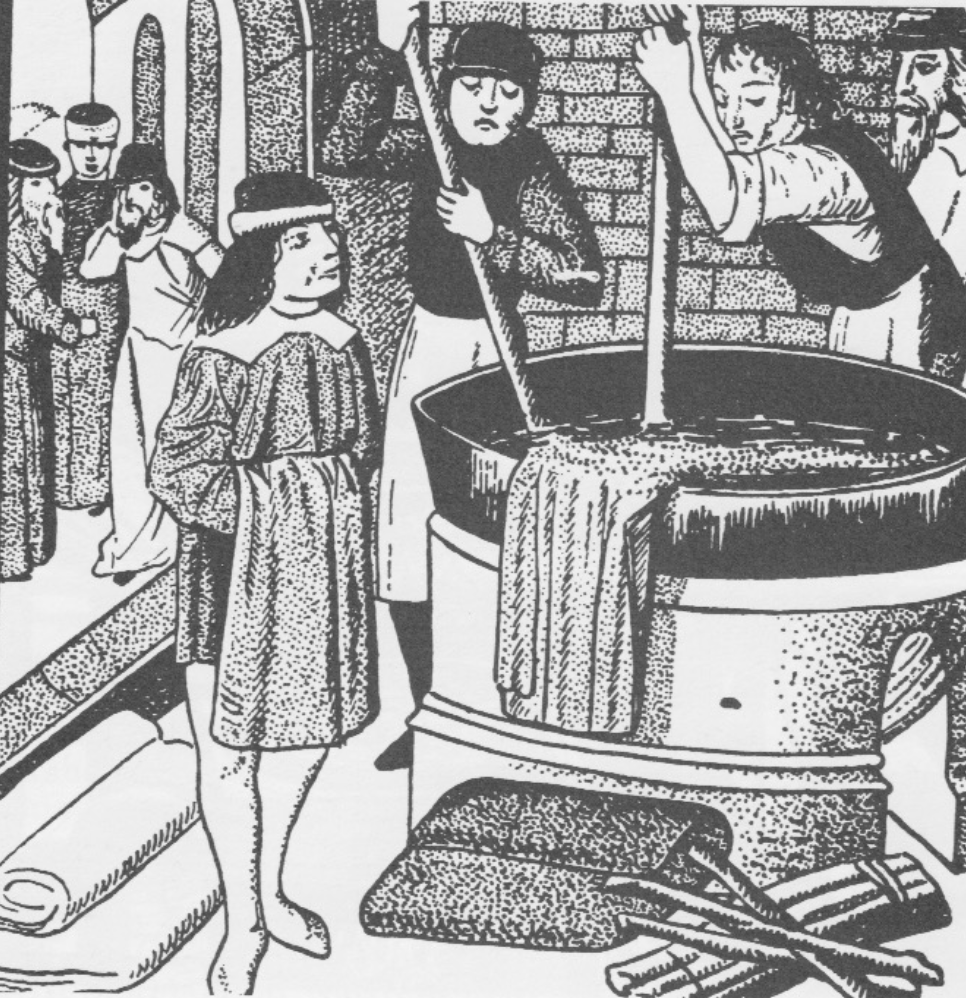
Source: Merrist Wood Agricultural College. 2024
Source: Merrist Wood Agricultural College. 2024
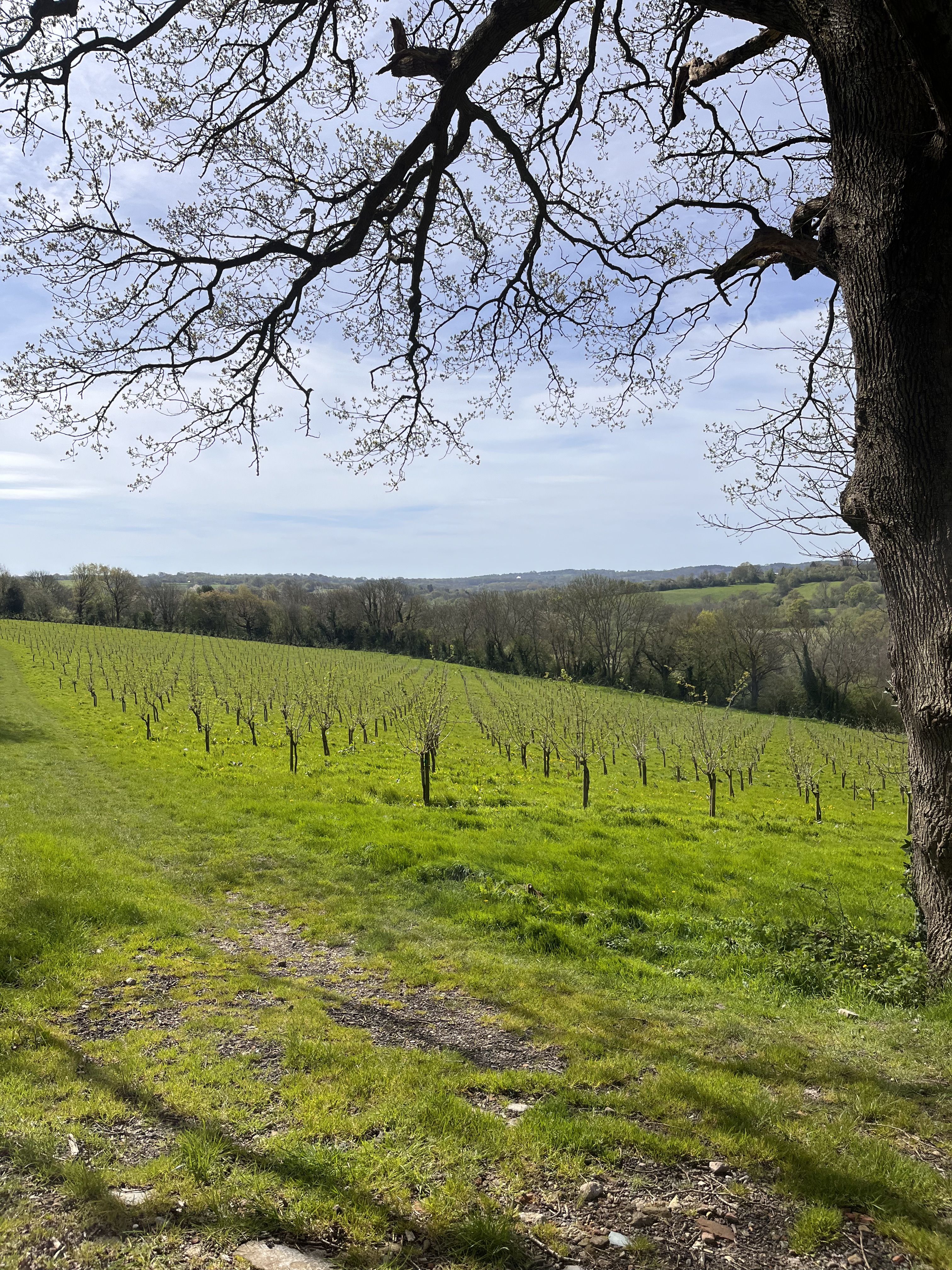
Source: Bush Barn Farm. E.Donohoe. 2024
Source: Bush Barn Farm. E.Donohoe. 2024
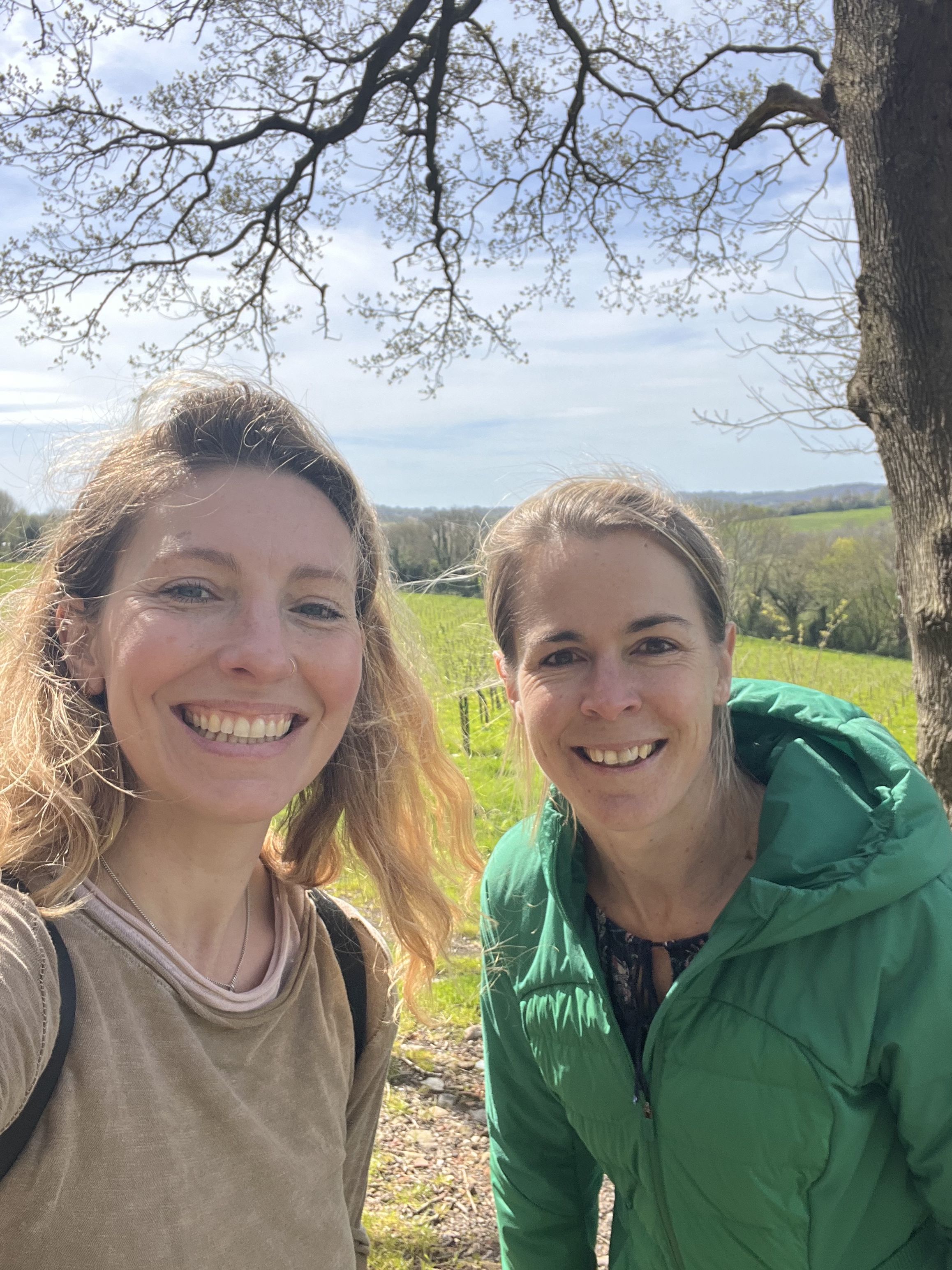
Source: Sarah with the owner of Bush Barn Farm. E.Donohoe.2024
Source: Sarah with the owner of Bush Barn Farm. E.Donohoe.2024
The Inspiration That Led to Innovation
I asked Sarah how she got into fashion sustainability, and what prompted her to start the Guildford Racks Project. “During the 2010s I worked as a designer for several high street brands, I used to travel overseas to visit dye and fabric production facilities, check prototypes, and audit bulk orders. It was there, where I discovered the hazardous chemicals used, and the vast amount of wastewater pouring out the back of the factory into the river.” Sarah continues to explain how her findings led her to research solutions for toxic fabric dyes, and how it resulted in discovering elderberry waste useful.
"Back in 2024, when I was looking into the history of my local area, I discovered that Guildford and its surrounding villages once had a thriving textile industry up to the 1700s. One of the cloths they used to make was called 'Guildford Blue,' which was a locally produced wool, dyed blue from a plant called Woad." Sarah goes on to explain how local traditions and textile practices became lost and forgotten due to overseas trade and colonialism. We could say that is when the fast fashion industry began, exploiting other cultures to make clothing cheaper, and at unnecessarily high volumes.
"We must learn from the mistakes of our history in order to design responsibly. Most importantly, the number one priority when starting a sustainable fashion movement is the planet. If the planet does not benefit from our actions, it is not worth pursuing."
From 2024 Sarah spent a few years studying natural dye processing, researching food waste and environmental issues in her area. “I wanted to recreate Guildford Blue but adopt a circular system, where the dye was sourced from waste, which is generated as a by-product of food, beverage, or medical industries that use organic matter. Sarah contacted farms in her local area that grew berries, beetroot, and vegetables, that she knew could be used to convert into natural dyes but did not have luck in finding ones who wanted to collaborate. “I contacted all the farms that I knew who had on-farm food waste, but they didn’t want to get involved,” Sarah revealed to me that some farms back then did not like to be associated with waste, as it could have jeopardised their reputation. In 2022 the Wildlife Fund for Nature (WWF UK) revealed that 25% of food waste starts on farms. (1) Sarah explained to me when she hit this wall, she persevered to find a source to work with.
It was during a walk at Pewley Hill in Guildford, that she discovered elderberries growing in hedgerows. “I remember reading on the Woodland Trust website, all those years ago, that elder trees are valuable to biodiversity, providing shelter and wild food for mammals and birds to feed from.” (2) That next day, Sarah researched elderberry farms in her bioregion, and that is when she discovered Bush Barn Farm, who answered her email and were open to discussing her project. “I was so excited when they emailed me back because I knew elderberries held great dye potential, dye to their bioactive anthocyanin properties.
Bush Barn Farm ticked all the boxes for Sarah. They supplied elderberries to holistic medicine companies and companies that made juices and cordials. It was from the pressing of the elderberries that generated the waste, leaving the seeds and skins behind for the waste pile, known as ‘cake.’ “I remember the first time I received my first kilo of cake. I had some local wool from Hatchlands Farm Estate, which was mordanted with alum, and I stirred the wool in the elderberry dye on a very low heat, to prevent felting.” Sarah explained to me that wool must be treated very carefully, and the dye can only be lukewarm. “The wool turned out a bright purple, not the ‘Guildford Blue’ colour I was hoping for, I knew there was going to be some time spent on developing the dyeing process to achieve the blue I needed.”
Perfecting the Perfect Blue
Sarah and I are stood inside the HQ of Guildford Racks Project, which used to be an old mill called Town Mill. She tells me that it was once part of a thriving wool and textile dyeing industry, in Guildford up to the 1700’s. “When the council originally let us lease the mill in 2025, we found some old tools and copper dyeing vats that were used for dyeing Guildford Blue.” Sarah shows me two large, stained copper vessels in her dyeing facility. “We actually had these cauldrons restored and used them, along with other dyeing vats, to originally develop Elderblue.”
Sarah holds up a long piece of wool fabric from her latest Elderwool collection, dyed into a gradient from indigo to lagoon blue and adorned with a solar print of elderberry silhouettes in a repeated pattern. ‘Solar Printing’ was a printing technique developed by Sarah and her team of textile designers and engineers, comprising the use of solar panels on their HQ rooftop to expose objects onto the fabric.
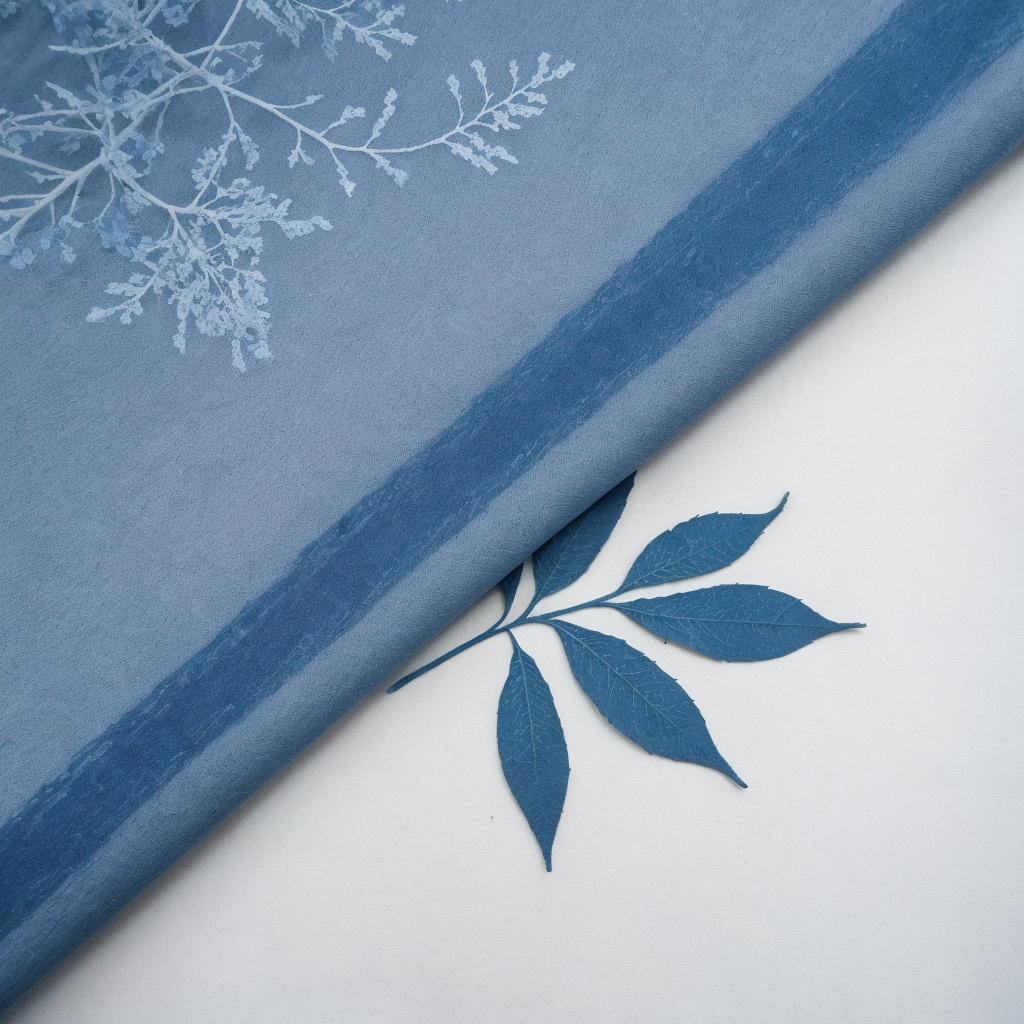
Source: E. Donohoe "elder branch exposed as anthotype onto blue fabric" prompt. ChatGPT, OpenAI, 25 Apr. 2024. /g/g-q9wdIq7OQ-photo-realistic-gpt.
Source: E. Donohoe "elder branch exposed as anthotype onto blue fabric" prompt. ChatGPT, OpenAI, 25 Apr. 2024. /g/g-q9wdIq7OQ-photo-realistic-gpt.
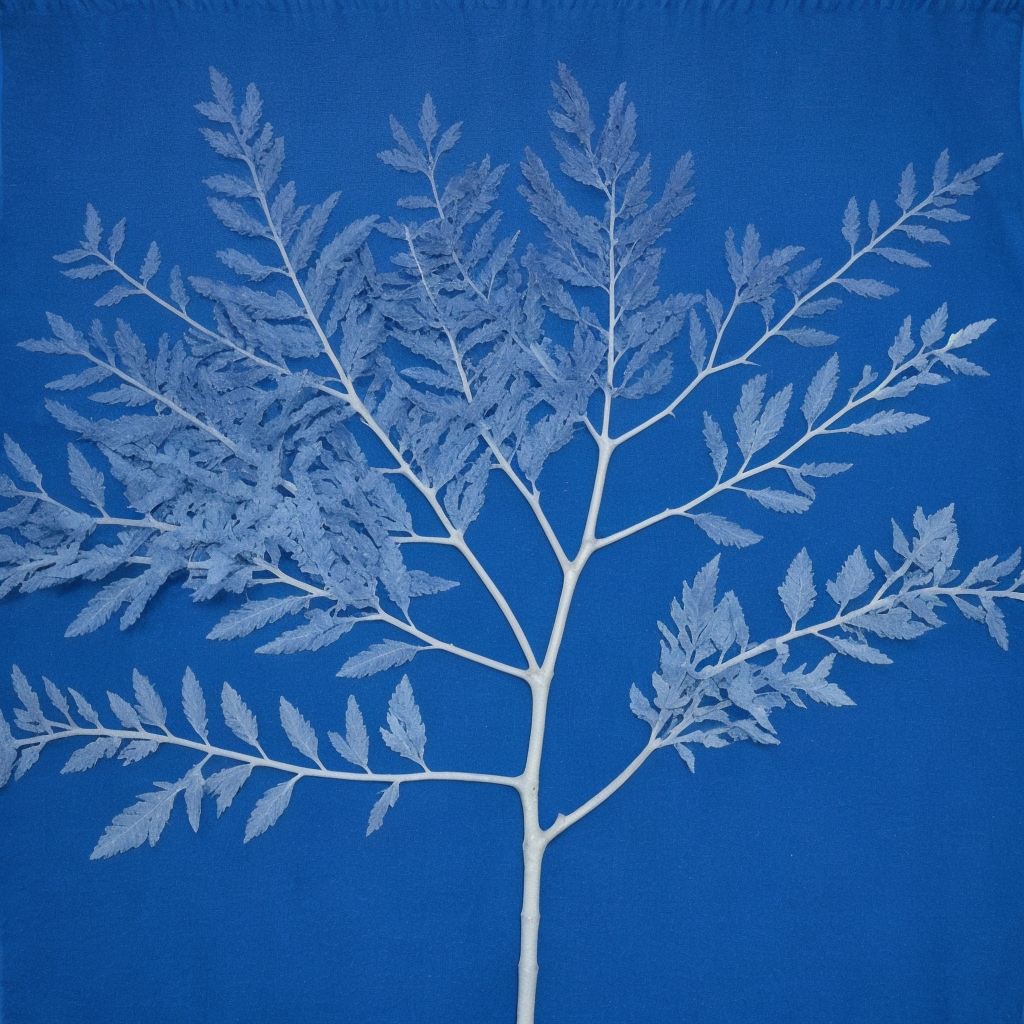
“We were inspired by anthocype and cyanotype printmaking, and decided to see if we could do something similar using solar panels.” Anthotype and cyanotype are two printmaking techniques that involve placing objects onto a material coated with an emulsion. The sun exposes the image onto the material over a period of days and weeks.
Sarah uses elderberry cake, which has been altered in pH with an alkaline modifier using baking powder to make the colour bluer (3), and gin from Silent Pool Gin Distillery, to make their emulsion that is painted by hand onto the fabric. The elder tree branches are laid out in a repeating pattern, which naturally temporarily secures to the cloth. Over the course of three hours, the elder tree branch exposes an impression onto the cloth, revealing a beautiful and delicate pattern, something unlike anything we have ever seen before. "Traditionally, anthotypes would take days or weeks to expose in natural sunlight. However, with solar panels, we can accelerate the exposure process onto the cloth without fading the fabric's colour, which can occur if dyed fabric is left in sunlight for too long. Typically, we need to dye the cloth a bit more vibrantly than usual to compensate for any fading."
Guildford Racks Project produces a collection of limited-edition Elderwool fabrics every year, featuring anthotype solar prints dyed using their collection of Elderblue dyes. They're limited edition due to the lengthy process involved in making the cloth, which comes with a high price tag, but they're sought after because of their longevity and biodegradable properties.
"The wool is sourced from Merrist Wood College, using their rare breeds of Wensleydales and Portlands sheep. The fabric is woven on a mechanical loom, then dyed using elderberry cake. Once the cloth has been dyed, it is dried on large wooden racks. The final process involves painting the anthotype emulsion by hand onto the fabric, which is then laid out onto the solar panels." Sarah explains that they can only carry out this process in the summer, as the remaining seasons are too problematic due to rainfall.
I ask Sarah if she has had any problems along the way with creating the Elderblue dyes and how the wastewater is disposed of once they finish using it. “Elderblue took a long time to develop because Elderberries dye things red and purple. However, due to their anthocyanin compounds, the pH balance can be changed with the addition of modifiers and mordants (4) to create further colours, such as light and dark blues, and an array of purples,” she explains. Guildford Racks Project originally set out to develop one colour that was close to Guildford Blue, but they ended up with a collection of colours to offer their customers. “It was a happy mistake!” she says.
“Elderblue took a long time to develop because Elderberries dye things red and purple. However, due to their anthocyanin compounds, the pH balance can be changed with the addition of modifiers and mordants (4) to create further colours, such as light and dark blues, and an array of purples”
Originally, Sarah planned to create a natural dye that adopted a cradle-to-cradle approach (6), meaning the products they produce can be recycled or returned to the soil to provide nutrients and food to plants and living things. "I imagined Elderblue being reused as a bio-fertiliser for farming, providing crops, soil, and insects with nutrients to thrive on, which would be a positive contrast to the toxic dyestuffs fashion companies used in the 2020s, that polluted the seas and lakes in the areas where they were used." The curveball was with the usage of modifiers and mordants, that made the wastewater either too alkaline or too acidic to then be discharged into the soil and used as a fertiliser. Sarah goes on to explain that PH balance in the wastewater needed to be neutralised, and tested on soil, to see how it reacts.
Supporting British Wool
The UK is home to 62 native breeds of sheep. Today, there has been a surge of biodynamic farms in the UK producing wool for British fashion brands. These farms exclusively use biodegradable fibers, which can be crafted into the finest cloths and garments designed to last a lifetime. Since the United Nations 17 Sustainable Development Goals came into action in 2030, fashion systems have turned to ‘make green products the norm’ (8), and British textile companies have turned to their ancestral roots in a regenerative approach to farming natural fibers such as wool. Goal 12 (9) from the SDGs encourages responsible consumption and production by promoting the design of lifecycle products that can be reused, repaired, and recycled. Wool, alongside the Guildford Racks Project Elderbio yarn, embraces an agroecological approach to Goal 12. I ask Sarah if she can describe her process with sourcing sustainable wool and how Guildford Racks Project handles wool processing and the designing of the UK’s most abundant fibre.
“Merrist Wood College is home to two rare sheep breeds, Wensleydales and Portlands, whose fleece has more value due to their high-quality fibers. Wensleydales wool is a long wool fibre, making it a popular choice for dyeing and knitting. Portlands originate from Dorset, and due to their small numbers, they are easily traceable (10). Their wool is compostable, hypoallergenic, and renewable, making them sustainable choices to use for our Elderwool cloths.”
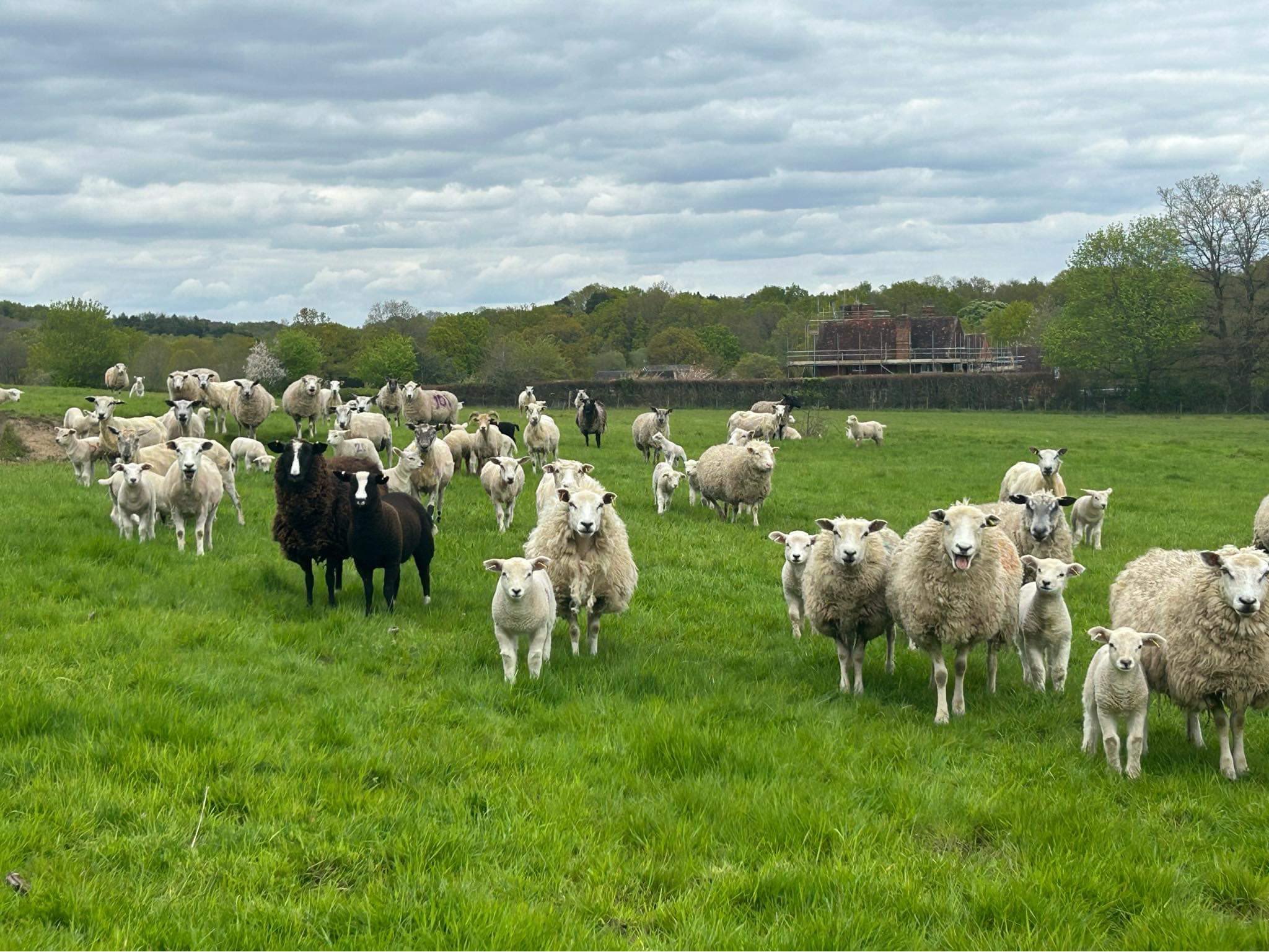
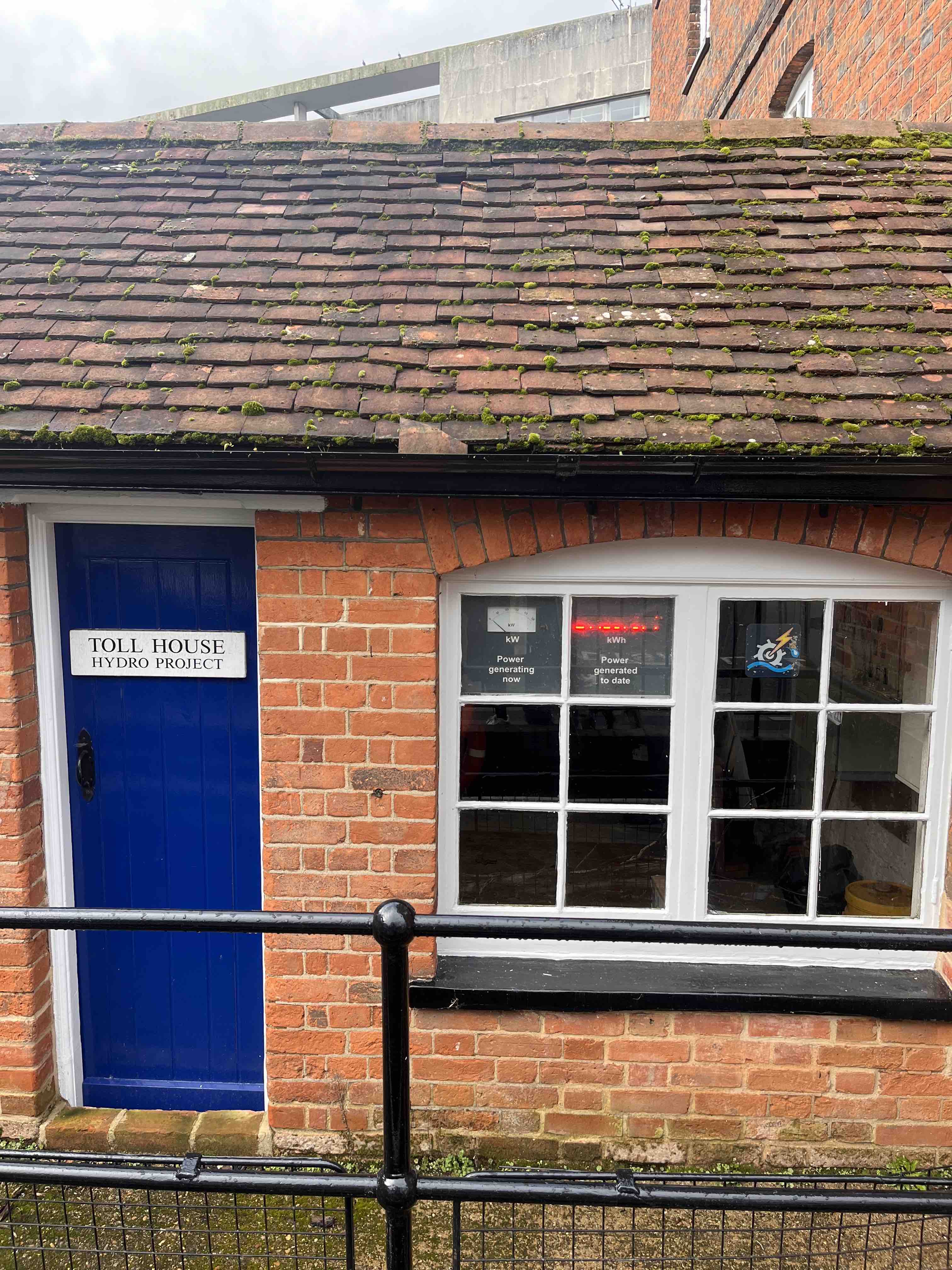
Source: E. Donohoe. 'Toll House Hydro Project.' March 2024
Source: E. Donohoe. 'Toll House Hydro Project.' March 2024
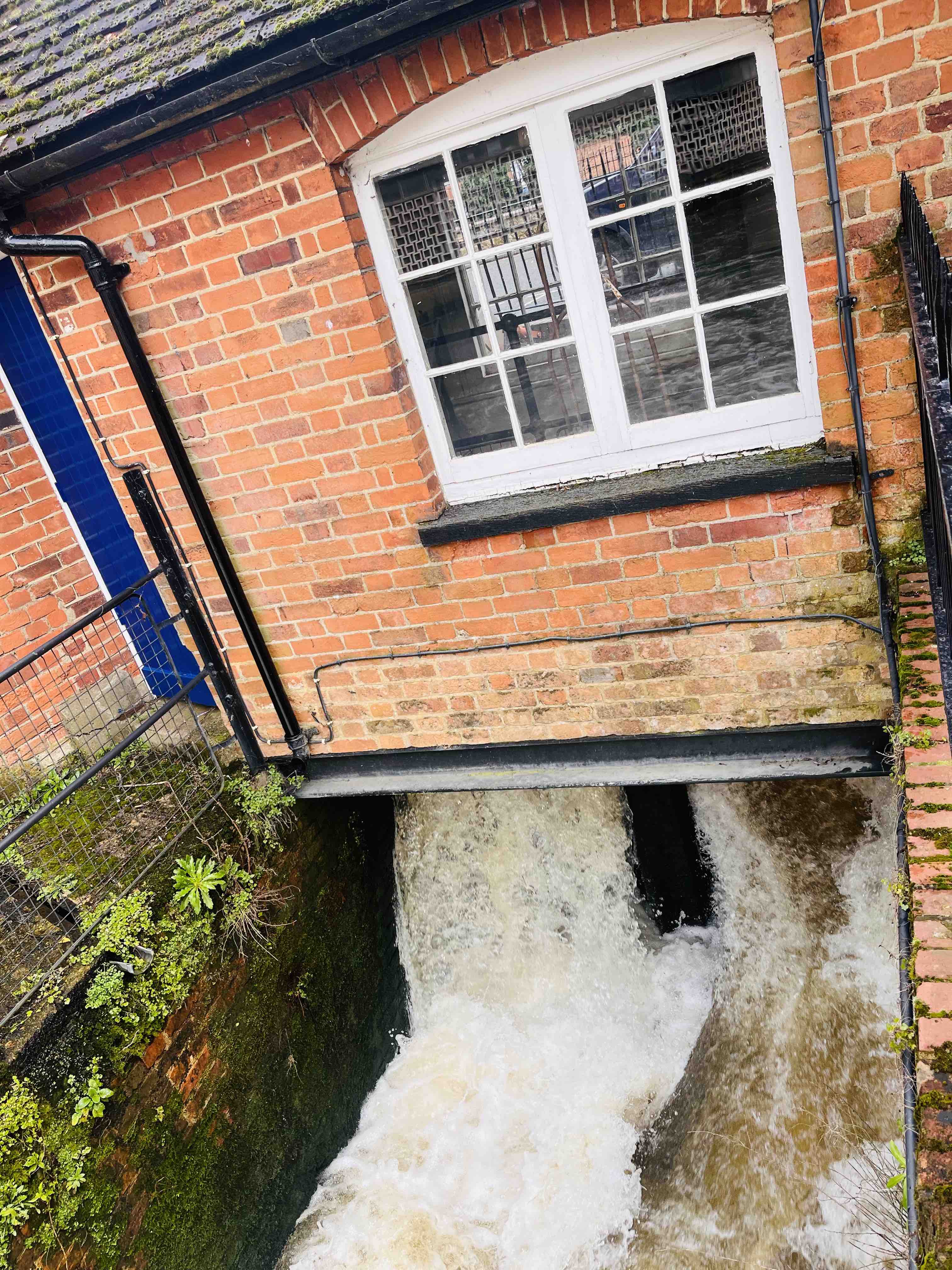
Source: E. Donohoe. 'Toll House Hydro Project.' March 2024
Source: E. Donohoe. 'Toll House Hydro Project.' March 2024
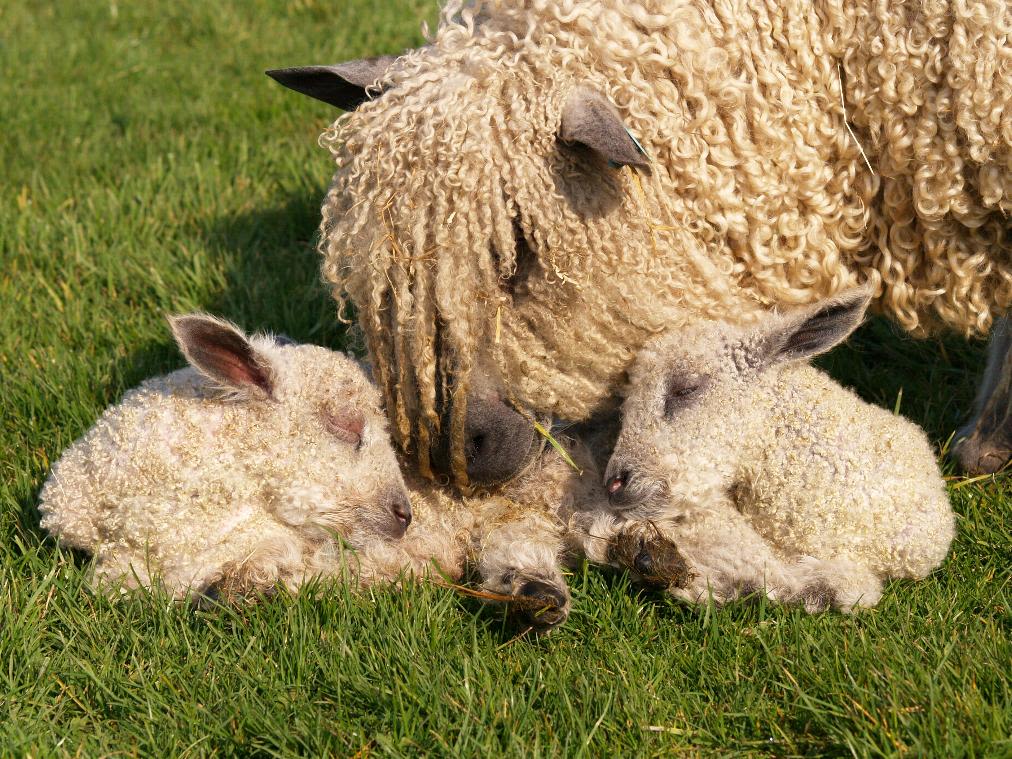
Source: Wensleydale Longwool Sheep [Photograph]. Accessed from https://yarnandknitting.com/know-your-sheep-wensleydale-sheep/ April 2024.
Source: Wensleydale Longwool Sheep [Photograph]. Accessed from https://yarnandknitting.com/know-your-sheep-wensleydale-sheep/ April 2024.
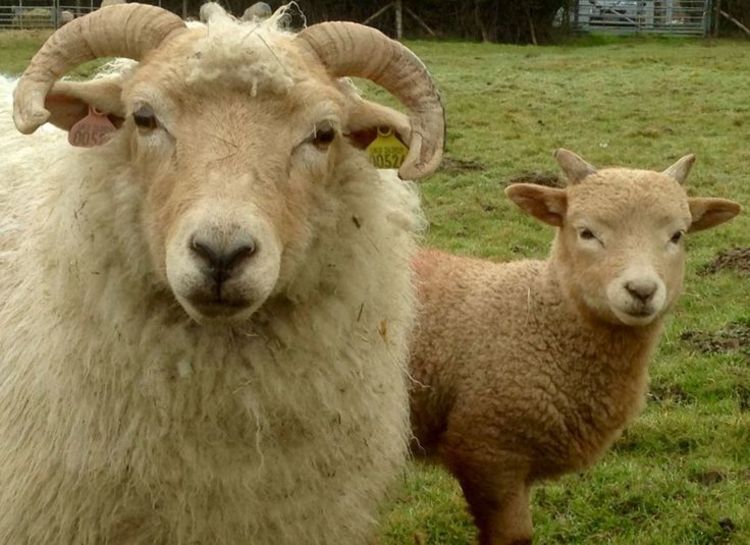
Source: 'Portland Sheep' Accessed from Pinterest, April 2024
Source: 'Portland Sheep' Accessed from Pinterest, April 2024
I asked Sarah how she processes the wool, and if she can process the wool without using toxic inputs?
“Our equipment to process the wool is powered by renewables, from Toll House Hydro Project and solar energy. Scouring, washing, and dyeing of the wool is done in-house, using collected rainwater, and the wastewater reused to scour and clean the wool before it is dyed.”
Sarah treats the wool with organic soap and essential oils such as peppermint and tea tree to make the wool smell fresh and clean. Sarah hands me over a handful of freshly washed wool, and it smells wonderful! The rest of the wools Guildford Racks Project is sourced from our local farms that have animal welfare at heart. Sheep need to be sheared between May and July, as it gets hotter; otherwise, the sheep will overheat, and they can attract parasites. Merrist Wood, Manor Farm, and Hatchlands Estate are in woodland and open field areas, making it the best environment for sheep to live in. "Agroecological approach to farming is sustainable because sheep flocks are rotated every 1-3 days to a fresh pasture, which allows the land to rest" (7).
The Innovation Behind Elderbio
As we move closer to the end of our tour at the HQ of Guildford Racks Project, the final visit is to see their new laboratory, where the famous biobased ‘Elderbio’ yarn was developed and is produced in small to large quantities. The success of Elderbio has put Guildford on the map, as one of the leading places for sustainable textiles development.
Only launching in 2037, after securing funding of £700,000 from the Natural Environment Research Council (NERC) (11), the development of Elderbio began.
I ask Sarah how she came across the idea in the first place of using elderberry waste to make biomaterials. “It was all by chance!” she exclaims. “We had already been using elderberries to produce Elderblue and Elderwool products, and I started researching into the scientific properties of elderberries. We discovered that several scientific researchers who wrote papers on using elderberry anthocyanins film on keeping seafood fresh, showed there was groundwork already done to prove further developments into elderberries could be achieved with the right funding and team in place.”
To kickstart the development of Elderbio, Sarah teamed up with Prof Veronika Kapsali and Dr Cathryn Anneka Hall, founders of Bio Inspired Textiles. (12) I asked why Sarah opted for this collaboration. “I have experience in sustainable fashion design and production, not material science and biology,” she explains. “Prof Veronika Kapsali is a pioneer in bioinspired textiles with over a decade of expertise in this area.” Aware of their previous research and affiliations with the Arts and Humanities Research Council and the University of Arts London, she knew they could provide invaluable support for her research.
Sarah proudly displays a test tube of Elderbio, elaborating that they required a compostable biopolymer to complement the elderberry extract for yarn production. “We approached Algiknit to gauge their interest if we could combine their ‘alginate’ biopolymer (13) to Elderbio. They were genuinely enthusiastic about our research. They readily agreed to collaborate with us, which was exciting, and gave us confidence that our research could provide fashion businesses with more sustainable and circular choices.”
I ask Sarah if she has any exciting plans for the future, “Our next goal is to collaborate with Lenzing Group, to blend Elderbio with TENCEL™, which will lend itself nicely to sportswear.” “The second goal on our list, is to develop new circular biobased textiles from other kinds of food waste, in with the help of our local community and Surrey County Council.”
Sarah picks up a large green caddy to show me. “Surrey Environmental Partnership has agreed to distribute these to every household in Guildford and the surrounding villages,” she explains. “Households that provide us with their food waste for our research will receive a discount on their energy bills.”
Curious, I inquire about how exactly this arrangement works. “All the residual waste from dyeing is sent to an anaerobic digestion (AD) facility owned by ESP,” Sarah clarifies. “We've been doing this since 2031 with our elderberry waste, and they've agreed to continue supporting us with further developments.”
As a gesture of inclusion, Sarah presents me with a green food waste caddy, inviting me to join the journey too.
Traceability
To conclude my interview with Sarah Clark from Guildford Racks, I ask her one final question around traceability, and how customers go about looking up the history of their product. “Traceability is fundamental to every company, and since the EU published The New Action Plan (15) for industries to create sustainable products, to be recycled, reused and repaired, we decided to used Xylene digital passport, powered by blockchain and satellite data, (16) to allow customers and everyone in the supply chain to view that products history.”
The Guildford Racks project continues to embrace the community by opening its communal dyeing facility one weekend each month. This allows members of the community to utilize the community dye vat to redye their clothes.
"Even though our company has evolved from a small natural dyeing studio to a biomaterial production facility, we still value the community as the cornerstone of our ethos. We aim to promote circularity and extend the lifespan of existing garments by offering our dyeing facilities to anyone who wants to use it.” “This way, we not only contribute to sustainability but also foster a sense of belonging within our community and have made many lifelong friendships on this journey.”
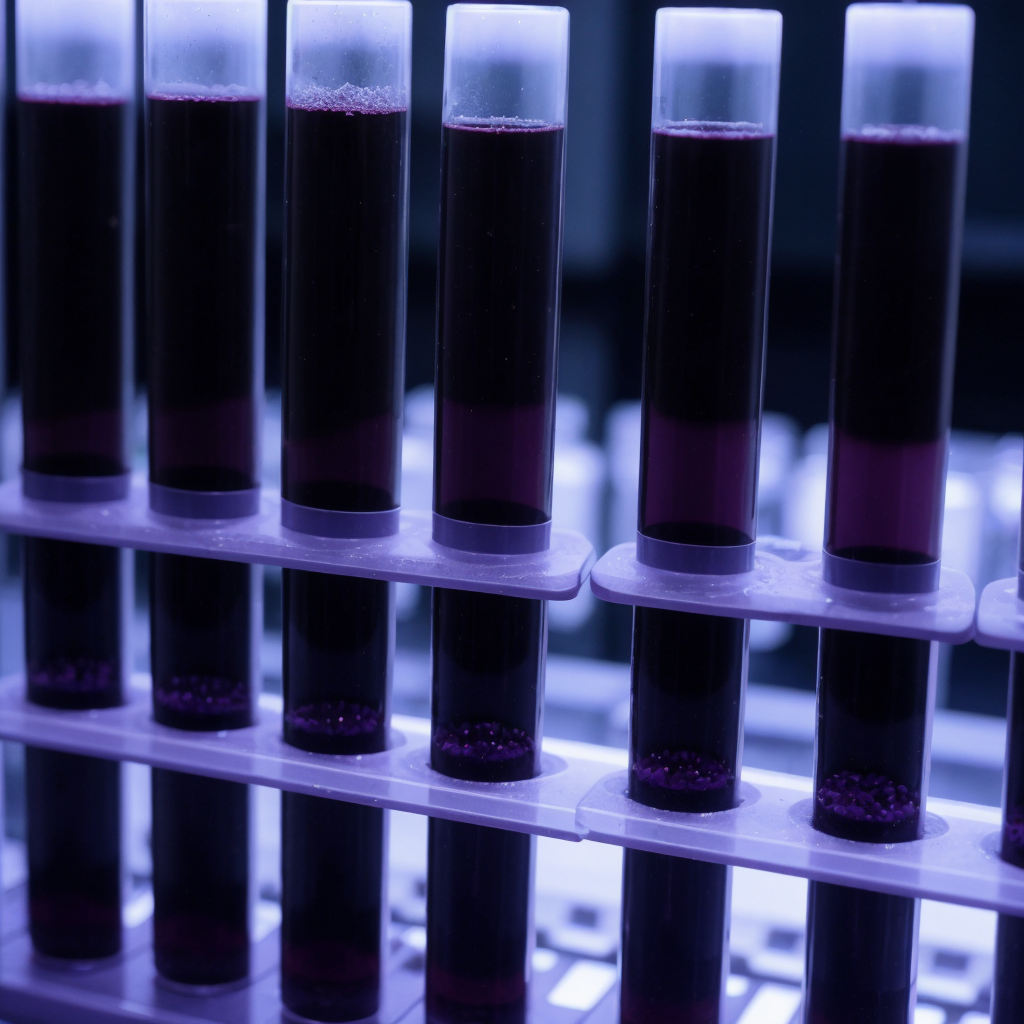
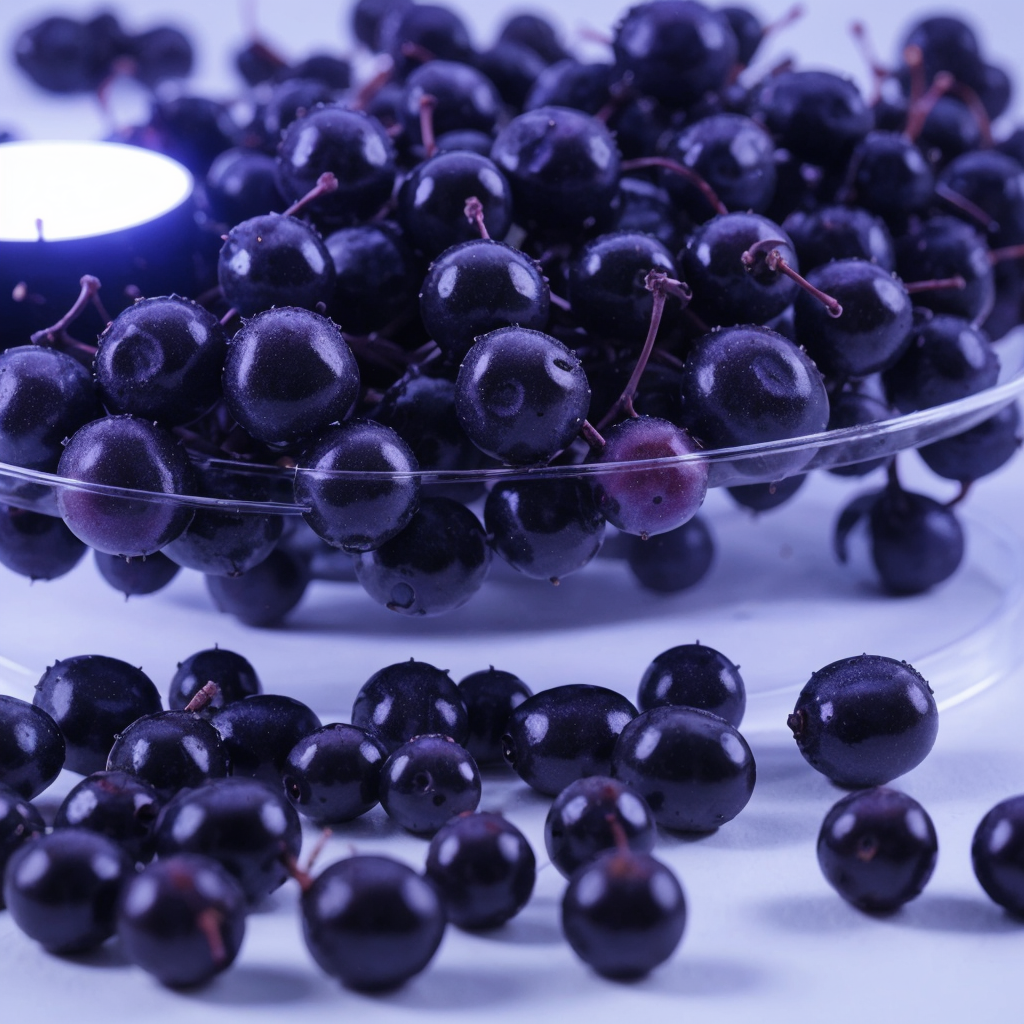
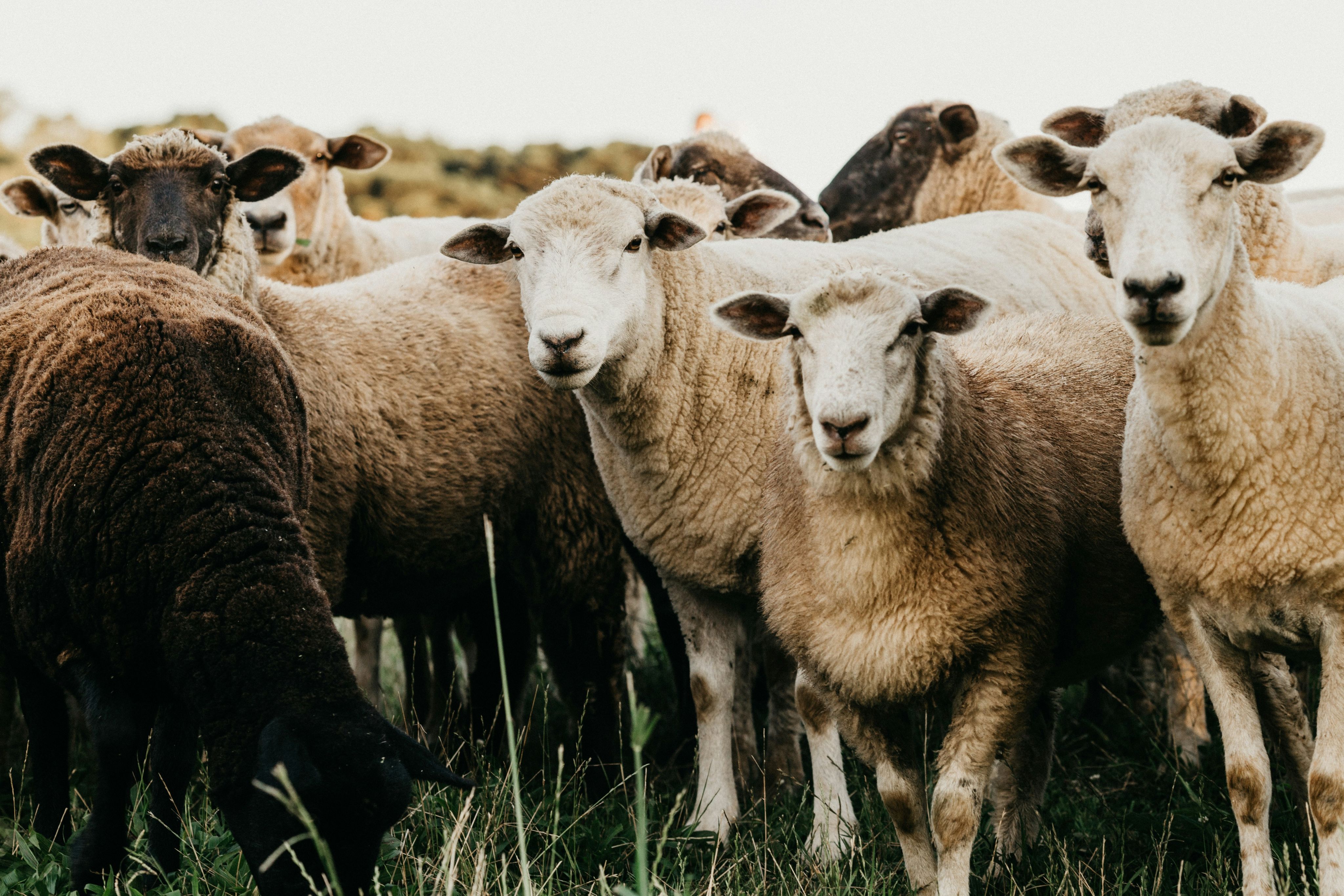

Advertisement - Grow your own Vogue garden, by planting the magazine into a flower bed. Starting with this first edition of mixed wildflowers that will attract pollinators. Cost £19.99
Advertisement - Grow your own Vogue garden, by planting the magazine into a flower bed. Starting with this first edition of mixed wildflowers that will attract pollinators. Cost £19.99
Below is a timeline detailing the milestones achieved by the Guildford Racks Project on its sustainability journey, illustrating the path they have taken to reach their current status.
We hope you have enjoyed this interview and subscribe to follow more stories on biomaterials, regenerative farming, and sustainable fashion on Vogue.com.
If you would like to grow your own Vogue garden starting with the first edition, click the link below to order today.
Vogue Garden
A Timeline of Guildford Racks Project
2035 - 2040
June 2040 – Elderbio yarns and Elderblue dyes, along with Elderblue fabrics, are launched to the market and exhibited for the first time at the Sustainable Angle fabric sourcing show in London.
Feb 2040 – Vogue launches its first biodegradable magazine, infused with seeds so readers can grow their own ‘Vogue Garden.’
January 2040 – Elderbio yarns are launched to market
2039 – Guildford Racks Project invests in the latest DyeCoo Textile System, which uses carbon to dye the fabric, and needs no water.
April 2038 – Prototype of Elderbio yarns has been developed and woven into a meter of cloth.
May 2037 – Algiknit offers biopolymers of ‘Alginate’ to Elderbio to make the yarn.
January - 2037 – Laboratory has been set up at Town Mill HQ, to start the development of Elderbio.
September - 2036 – £700,000 funding has been secured from The Natural Environment Research Council (NERC) to develop Elderbio biobased textiles.
May 2035 – Sarah reaches out to Prof Veronika Kapasali and Dr. Cathryn Anneka Hall at Bio-Inspired Textiles, to discuss the possibilities of developing elderberry waste into circular biobased textiles.
2030 - 2034
2034 - Guildford Racks Project is in discussion with Prof. Dr. Gülin Selda Pozan Soylu, at Istanbul Technical University to discuss their research into elderberry use for bio films, to discover if it can be used to develop biomaterials for textiles.
2033 – Guildford Racks Project becomes a member of Circular & Biobased Textiles Innovation, to network with textile chemists and eco designers. (9)
2032 – Guildford Racks starts research into using elderberry waste for alternative biomaterials.
2031 – Elderberry cake from dyeing Elderblue is sent to an anaerobic digestion (AD) facility, owned by ESP (Surrey Environmental Partners) to be produced into biogas and biofertilizer. (1) This achievement is recognised by Surrey County Council, and GRP (Guildford Racks Project) is awarded the ‘Local Sustainable Business’ seal of approval.
2030 – Surrey Environmental Partners reaches 80% of food waste reduction in local area, due to educational marketing to the community in ways to reduce household food waste and turn collected non-contaminated food waste into biogas and biofertilizer. (1)
2025 - 2030
2029 – Guildford Racks Project is in discussion with Surrey Environmental Partners about opening research for using elderberry wastewater disposal as a source of biofertilizer.
January 2028 - The University of Surrey is invited by the Guildford Racks Project to discuss powering the Town Mill headquarters with their solar energy farm.
April 2027 – Guildford Racks Project starts discussions with Surrey Environmental Partnerships, to find opportunities to collaborate on promoting a circular economy through using spotted food waste for future natural dyes.
March 2027 – The government has stated that producers of packaging will be held responsible for the product’s lifecycle and local authorities will be compensated for managing household waste. (3) Guildford Racks Project discovers opportunities for economic growth, through potential food waste collection from farms and local authorities.
July 2026 – Elderblue is on the market and receives production orders at Premier Vision in Paris.
June 2026 – Elderblue and Elderbio receive orders at the Sustainable Angle show. Sarah at Guildford Racks Projects presents at the show, to talk about her team’s innovation with using elderberry waste for biodyes.
Feb 2026 – Bush Barn Farm receives a new contract from Viridian, to supply their company with elderberries for the elderberry syrups they produce. Guildford Racks Project is offered more ‘cake’ from their production line, to use for Elderblue developments.
January 2026 – Guildford Racks Project, and community dye space is featured in the local newspaper, the Surrey Advertiser.
Sep 2025 – Residents in Guildford are requested by Surrey Environmental Partnerships to reduce food waste, through marketing initiatives such as ‘Rethinkwaste.co.uk’ website and app. (4)
July 2025 – Guildford Racks Project launches a community dye vat and community mordant vat, to encourage locals to redye old jeans and clothes, using their Elderblue dyes.
October 2025 – Water filtration System is rented, to recycle and clean wastewater from dyeing and processing with Elderblue and Elderwool products.
May 2025 – Secured €15,000 from EU S4Fashion (8)
April 2025 – Guildford Racks Project secure the ground floor premises at Town Mill in Guildford, as their headquarters to begin developing the production of Elderblue natural dyes and dyed wool yarns. The ground floor is powered 100% by Guildford Hydro Project.
February 2025 –The University of Surrey Solar facility begins to generate energy for university and Guildford Racks Project Head Quarters.
Jan 2025 – Guildford Hydro Project and Guildford Racks Project in the discussion about using hydro energy to power the facility at the onsite Town Mill.
2023 - 2025
August 2024 – A review published by Elsevier on anthocyanin-based films and their application in sustainable intelligent food packaging, (5) indicates that innovations in using anthocyanin from elderberries could be probable for future textile development.
May 2024 – Research and Development for elderberry natural dye, natural mordants, and modifiers begin.
April 2024 – Early part of 2024, Guildford Racks Project connect with the animal management department at Merrist Wood, to begin talks about using their sheep wool and fleece, from their Wensleydales and Portlands breed sheep.
March 2024 - Guildford Racks Project sources elderberry waste at Bush Barn Farm juicing supplier, to start research and development of natural dyes, mordants, and modifiers on local wool from Merrist Wood College and Manor Farm.
February 2024 – Construction of the University of Surrey Solar Facility starts and is approved by Guildford Borough Council. (7)
January 2024 – Spring kicks start to Surrey County Council's Urban Biodiversity Opportunity Areas (URBOAs) program, only reaching out to the Guildford area, to promote nature loss, and open urban corridors to more green spaces. Guildford Racks Project collaborates with residents to promote urban greening in their gardens and workplaces.
December 2023 – Research article published on Plos One, about how an alternative to plastic food wrap, elderberry anthocyanin film, can keep shrimps fresh. This research suggests that anthocyanin compounds can be developed into biomaterials. (6) Sarah Clark researches anthocyanin-rich foods that are wasted.
October 2023 – Sarah Clark researches food waste and its potential application as natural dyes, intending to replace the synthetic and toxic dyes commonly used in fast fashion worldwide. These dyes have devastating effects on biodiversity and the environment.
September 2023 – Guildford Racks Project is founded by Sarah Clark – Textile designer and Sustainability Development Manager.
Manifesto Bibliography
1. Graham, Andrea. The Future of Food 2040. [Online] 2019. [Cited: 11 April 2024.] https://www.nfuonline.com/archive?treeid=116020.
2. Sidor, Andrzej. Advanced research on the antioxidant and health benefit of elderberry (Sambucus nigra) in food – a review. Science Direct. [Online] October 2015. [Cited: 12 April 2024.] https://www.sciencedirect.com/science/article/pii/S1756464614002400.
3. Hall, Alicia. Natural Kitchen Dyes. s.l. : Pen & Sword White Owl, 2022.
4. Anglia., University of East. "The Elderberry Way To Perfect Skin." . ScienceDaily. [Online] 6 July 2007. [Cited: 14 April 2024.] https://www.sciencedaily.com/releases/2007/07/070703172020.htm.
5. River, Wey. The Wey Valley Clothing Industry: Wool, Linen & Leather. Wey River. [Online] 21 May 2006. http://www.weyriver.co.uk/theriver/industry_4%20fulling.htm.
6. Society, Surrey Hills. SHS-VIEWS-AUTUMN-WINTER. [Online] 2016. https://www.surreyhillssociety.org/wp-content/uploads/2016/08/SHS-VIEWS-AUTUMN-WINTER-2016.pdf.
7. Surrey, University of Surrey. University of Surrey Strategic Energy Collaboration. SSE Energy Solutions. [Online] [Cited: 14 April 2024.] https://www.sseenergysolutions.co.uk/university-of-surrey-strategic-energy-collaboration.
8. What happens to your food waste. Surrey Environmental Partnership. [Online] https://www.surreyep.org.uk/what-happens-to-your-waste/food/.
9. Forum, Guildford Heritage. The Guildford Story. Guildford Heritage Forum. [Online] https://guildfordheritageforum.co.uk/2019/10/30/the-guildford-story/.
Scenario Bibliography
1. UK, WWF. WWF-UK HIDDEN WASTE REPORT 2022. s.l. : WWF UK and Tesco Partnership, 2022.
2. Trust, Woodland. Elder. Woodland Trust. [Online] Woodland Trust. https://www.woodlandtrust.org.uk/trees-woods-and-wildlife/british-trees/a-z-of-british-trees/elder/.
3. Donohoe, Erin. "Large food caddy with handle, with perished food waste: beetroot, blueberries, onion skins and avocado skins" prompt. . ChatGPT, OpenAI,, Guildford : 2024.
4. Hall, Alicia. Natural Kitchen Dyes. s.l. : White Owl, 2022.
5. Davey, Kathryn. Natural Dyeing: Modifying Colour and Expanding Your Palette. The Thread. [Online] 6 August 2020. https://blog.fabrics-store.com/2020/08/06/natural-dyeing-modifying-colour-expanding-your-palette/.
6. McDonough, William. Cradle to Cradle. McDonough.com. [Online] https://mcdonough.com/cradle-to-cradle/.
7. Hague, Emma. Farming Fashion: Wool is a collaboration between South East England and South West England Fibreshed. s.l. : South East & South West Fibreshed, 2023.
8. Q&A: A New Circular Economy Action Plan. European Commission. [Online] 11 March 2020. https://ec.europa.eu/commission/presscorner/detail/en/QANDA_20_419.
9. Nations, United. #Envision2030 Goal 12: Responsible Consumption And Production. United Nations. [Online] https://social.desa.un.org/issues/disability/envision-2030/envision2030-goal-12-responsible-consumption-and-production.
10. Tree, Orion. Portland Sheep. Orion Tree. [Online] https://oriontree.uk/portland-sheep.
11. Funding Finder. UK Research and Innovation. [Online] https://ukri.org/.
12. Textiles, Bio Inspired. Contact. Bio Inspired Textiles. [Online] https://www.bioinspiredtextiles.com/contact.
13. —. Bio Inspired Textiles. [Online] https://www.bioinspiredtextiles.com/.
14. Preuss, Simone. Sustainable textile innovations: bio yarn made from kelp fibres. Fashion United. [Online] 26 March 2018. https://fashionunited.uk/news/business/sustainable-textile-innovations-bio-yarn-made-from-kelp-fibres/2018032628811.
15. European Commission, Directorate-General for Environment. A new Circular Economy Action Plan For a cleaner and more competitive Europe. European Commission. [Online] 11 March 2020. https://eur-lex.europa.eu/legal-content/EN/TXT/?qid=1583933814386&uri=COM:2020:98:FIN.
16. Xylene. Xylene. [Online] https://xylene.io/.
Back Cast Bibliography
1. Partnerships, Surrey Environment. What happens to your waste. Surrey Environment Partnership. [Online] [Cited: 14 April 2024.] https://www.surreyep.org.uk/what-happens-to-your-waste/food/.
2. Council, Surrey County. Urban greening opportunities across Surrey to help reverse nature loss . Surreycc.gov. [Online] Surrey County Council, 16 October 2023. https://www.surreycc.gov.uk/community/climate-change/things-you-can-do/urban-greening.
3. Partnership, Surrey Environmental. Sep_25_report_final. Surrey Environmental Partnership. [Online] April 2023. https://www.surreyep.org.uk/wp-content/uploads/2023/01/sep25_report_final.pdf.
4. Waste, Rethink. Rethink Waste. [Online] https://rethinkwaste.co.uk/Dashboard.
5. Mengyang Xu, Donglu Fang,Benard Muinde Kimatu,Lianfei Lyu,Wenlong Wu,Fuliang Cao,Weilin Li. Recent advances in anthocyanin-based films and its application in sustainable intelligent food packaging: A review. [Online] August 2024. https://www.sciencedirect.com/science/article/abs/pii/S0956713524001488.
6. Guo N, Song M, Liu W, Zhang F, Zhu G. Preparation of an elderberry anthocyanin film and fresh-keeping effect of its application on fresh shrimps. PLoS ONE. [Online] 2023 November 29. [Cited: 21 April 2024.] https://journals.plos.org/plosone/article?id=10.1371/journal.pone.0290650#references.
7. Solutions, SSE Energy. UNIVERSITY OF SURREY STRATEGIC ENERGY COLLABORATION. [Online] https://www.sseenergysolutions.co.uk/university-of-surrey-strategic-energy-collaboration.
8. ETP, Textile. Sustainable And Circular Fashion: EU Funding Opportunities For SMEs. Textile ETP. [Online] https://textile-platform.eu/news/sustainable-and-circular-fashion-eu-funding-opportunities-for-smes.
9. Circular & Biobased Textiles Innovation Hub. [Online] https://textile-platform.eu/innovation-hub-circular-and-biobased-textiles.
Research and project by Erin Donohoe. MA Sustainable Fashion student at Falmouth University. Contact: erindstudio@gmail.com
